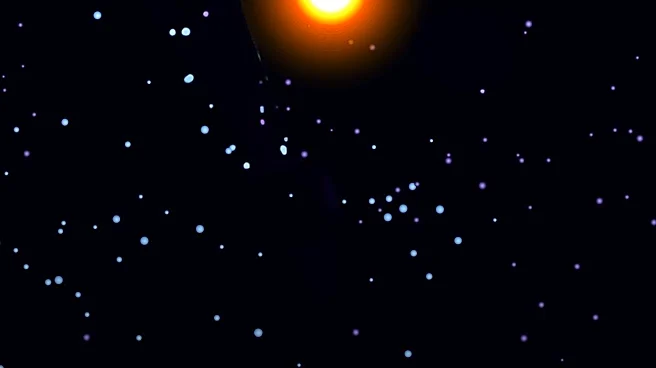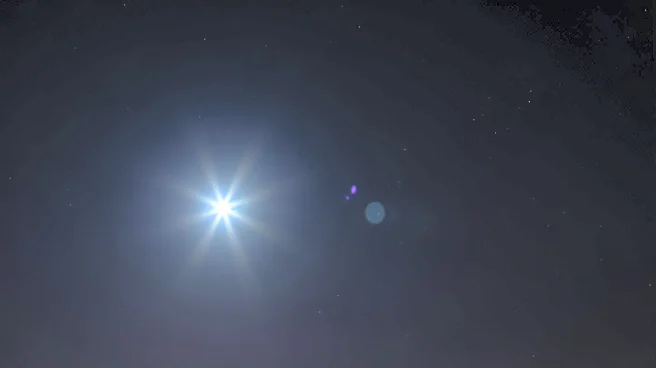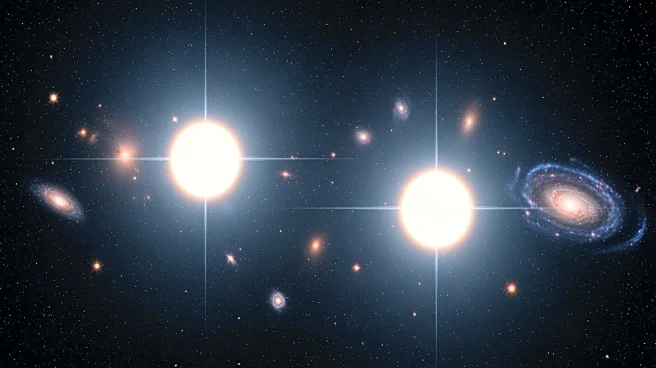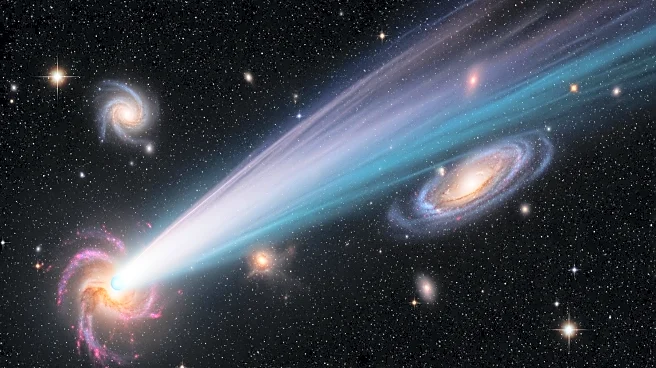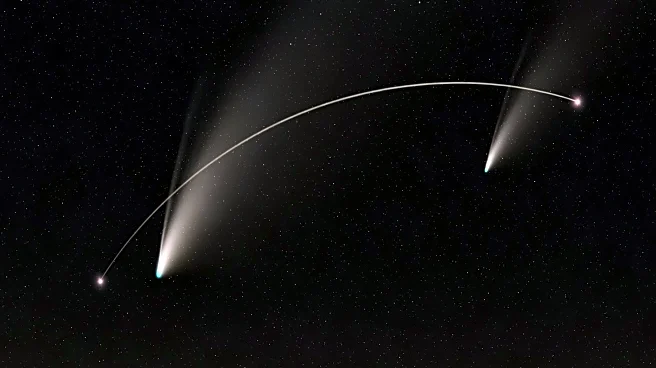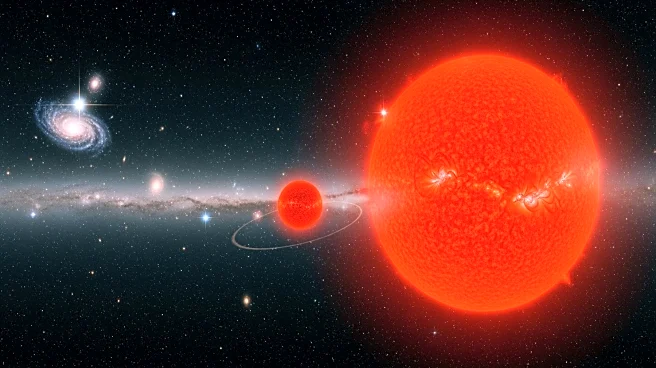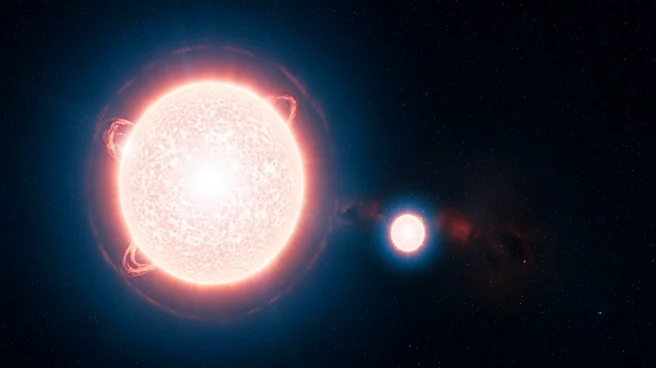What's Happening?
Fomalhaut, a prominent star in the constellation Piscis Austrinus, is making its annual appearance in the fall skies of the Northern Hemisphere. Known as the 'Royal Star of the South,' Fomalhaut is notable for its isolation in a largely empty part of the sky,
making it a significant marker of the autumn season. With a magnitude of +1.2, it is not the brightest star but stands out due to its solitary position. Historically revered by Persian astronomers as one of the four 'royal stars,' Fomalhaut has been a point of interest for skywatchers and sailors alike. Modern observations have added intrigue, with the Hubble Space Telescope once suggesting the presence of an exoplanet, Fomalhaut b, though later analyses have cast doubt on this finding.
Why It's Important?
Fomalhaut's return is significant for both cultural and scientific reasons. Culturally, it has been a harbinger of autumn, symbolizing the transition of seasons with its appearance as the nights grow longer. Its historical status as a 'royal star' underscores its importance in ancient astronomy and navigation. Scientifically, Fomalhaut continues to intrigue astronomers, particularly with the debate over the existence of an exoplanet in its orbit. This ongoing research contributes to our understanding of planetary formation and celestial mechanics. For navigators, Fomalhaut serves as a reliable guide in the southern skies, highlighting its practical utility alongside its cultural and scientific significance.
What's Next?
As Fomalhaut continues to be a subject of astronomical study, future observations may provide more clarity on the nature of the objects surrounding it, such as the debated exoplanet or dust formations. Advances in telescope technology could offer new insights into its role in the broader cosmic landscape. For skywatchers, Fomalhaut will remain a seasonal marker, visible in the southern sky during autumn evenings, offering a consistent point of reference for both amateur and professional astronomers.
Beyond the Headlines
Fomalhaut's solitary presence in the sky not only marks a seasonal change but also reflects a deeper connection between celestial events and human culture. Its role in navigation and its historical significance as a 'royal star' highlight the enduring relationship between humanity and the stars. As technology advances, the star's scientific mysteries may unravel, yet its cultural and navigational roles will likely persist, continuing to inspire and guide those who look to the skies.
